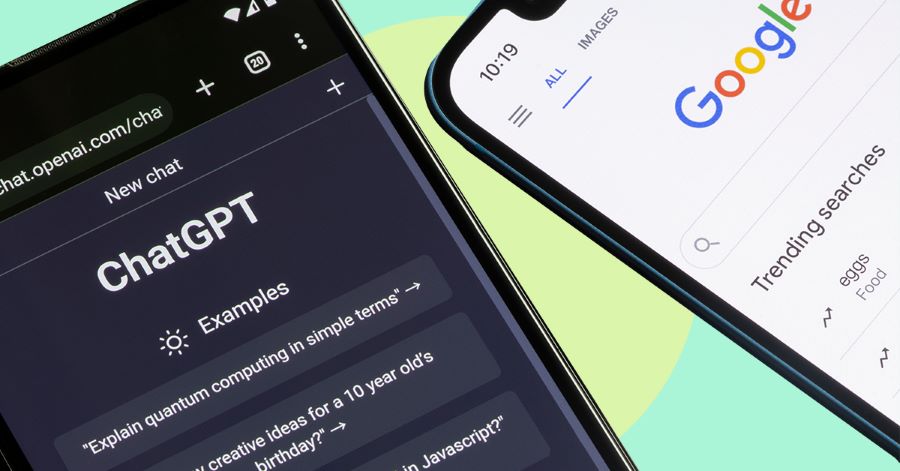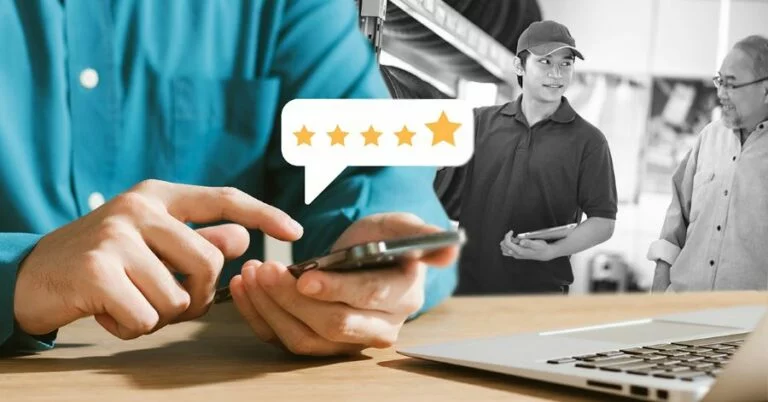Truelogic Episode 53 Recap: How ChatGPT Can Revolutionize Your SEO

Podcast Transcription
ChatGPT can help SEOs with competitor research, technical SEO, on-page optimization, content strategies, and off-page optimization. It can be used for keyword research, meta content, content refreshes, content consolidations, and building safe links. By using Chat GPT, SEOs can automate tasks that normally take a long time, saving both time and effort.
What is ChatGPT?
Bernard San Juan III: Let’s talk about chatGPT again. So since chatGPT came out in late November of 2022, I’ve been promoting it to my social circles. Not my social channels, my social circles. So my actual friends like a zealot and I’ve shown it to everybody, and everybody I’ve shown it to has gone bonkers. And I can understand, and I can’t even count the number of times where people have told me, “Wow, a lot of people are going to lose their jobs over this.” And whenever I hear that, the first thought in my mind or my thinking always tends to drift to, now, why would you say that? Because it’s just a natural language AI. So today we’re going to talk about chatGPT again. And this time, I wanted to talk about it from the context of the job I saw in the mirror. I am an SEO and that’s what I see when I look in the mirror. And I’m going to give you guys some practical applications, and some practical tips on how I use them day to day.
How you can use chatGPT to turbocharge your SEO game?
Let’s go back to that core question that people keep asking me. Is this going to kill a lot of jobs? And the answer is, I really can’t imagine my signature becoming ChatGPT managing partner Truelogic, Inc. I just don’t see it. I don’t see chatGPT being able to do my job. Let’s just limit it to the SEO capacity. I don’t see chatGPT taking over my job as being a particularly good SEO, but I do see a Bernard powered by chatGPT. That’s what I see. And in this episode, what I’m going to go through is I’m going to go through how chatGPT powers my SEO process from a personal perspective. And then if you are an SEO and you’re listening to this, or if you’ve got an SEO team, they might want to adopt some of these.
The Benefits of ChatGPT for SEOs and Digital Marketers
- Competitor research
Let’s begin with strategy. And those five things that I talked about earlier do not even include strategy. ChatGPT has been excellent at helping provide competitor research for me. If I’m researching a brand, let’s say I’m looking at Landmark, and you name the brand. I might be looking at the Dusit Thani, I might be looking at the Makati Peninsula. It could be any brand. And I can simply ask chatGPT, who are the primary competitors of this brand? By the way, take note. That question is pretty loaded because those are the types of questions where it’s an opinion, and so chatGPT can get it wrong. So make sure that when you ask that question, you have some background knowledge so that you know it’s confidently giving you a wrong answer. But to me, it helps, right? Because I would ask it for, let’s say seven competitors, two, three, or four are wrong, but all I need are one, two, or three competitors. So I’ll ask you, give me the top ten competitors and all I need are two, or three competitors. So that’s the first thing that I do.
The next thing is if those pages existed before 2021 because ChatGPT is only trained for data until 2021. If it existed before 2021, I will paste the URL onto chatGPT and ask it, what keywords would this page be ideal to optimize for? And chatGPT gives me an initial list of keywords. Now take note, that’s not your keyword research. You’re still doing competitive research, but you get an idea of keywords. Once it gives you this spaghetti of keywords, what you then ask it to be, can you group those keywords by context? Can you group those keywords by syntax? And now what you’ve got is keywords in groups that you just have to plug into Keyword Planner or Semrush or whatever SEO tools you like to use to get the requisite search volumes. Okay? So that’s how I do it. That’s where I use it in my competitor research. Instead of trying to do Google searches, trying to look at the results, 1,2, 3, and 4 for different keyword variants, I just ask for chatGPT’s opinion. That’s not the entire competitor research. Those are some of the steps I do in competitor research. But those are now automated steps, right? I can do it in four minutes which would otherwise take me 20, 30, or 40 minutes to do.

- Technical SEO
Technical SEO is about empowering search engines to scan and remember your web pages. So I’ll repeat that technical SEO is about making sure that your website can be scanned and remembered by search engines. And this is where chatGPT comes in handy. Again, don’t do this if you’ve got no technical know-how, but in my opinion, it’s gotten this wrong significantly less than competitive research. But I don’t have to use a robots.txt generator. For those of you that don’t know, I don’t write the robots.txt files. You don’t write that. It’s not an essay. I literally just have a generator. There is a tool that I go to that generates that for me. I don’t need to go to that tool anymore. I just tell chatGPT to write me a standard robots.txt file. Or I’ll tell it, “Give me a robots txt file for this domain,” and it gives me the robots.txt file like the things that need to go into the robots.txt file.
Another thing that I use chatGPT for in terms of technical SEO is I ask it to write my microformat schema code, the HTML version of the schema, or I ask it to write my jsonLD for a schema. So if I’m using a location schema, a business schema, and so on, I ask chat GPT to write that for me. Tadah. All I have to do is plug it into a schema tester and done. Done.
Next, based on what the website is built on, I asked chatGPT what are some of the more popular caching tools for that kind of website. So if it’s WordPress, I ask it, “What are some of the most popular caching tools I can use for that website?” So I don’t use it to write caching plugins. That’s such a bad idea. I use it to research what good caching plugins are a great match for the theme that that website uses. I’ve also used it to debug websites, like sometimes where we’ve got a website, where we’ve built a website and then I don’t understand why after tweaking some of the code on the site, I still get content layout shifts. I paste the code into chatGPT and ask it to help me debug it. The other is it can also render code for, let’s say, adjusting to viewport sizes or image size rendering. So these are some of the technical capabilities that chatGPT can help you out with on the page. This is where it becomes really powerful. I’ll jump more into the content.

So chatGPT is excellent when you’re refreshing your meta content, especially if, let’s say you’ve got a 500-page website, you’ve got 100 URLs that are of a specific format like they might be product pipe brand, and then you realize that your others are just taken from the header content of your web pages. You actually can ask chatGPT, you just grab the URLs and say, “Can you type me meta titles for these URLs following this format,” or always include a pipe space brand? And it just provides you with all of the meta titles for the pages. You don’t have meta titles for that one.
The other thing you can do is let’s say you are in Screaming Frog and you saw that 20% of your pages have meta descriptions that are more than the 165-170 character limit. What you can do is you can plug those into chatGPT and say, “Can you rewrite this within 150 character limit?” So that’s one of the easiest ways to do it so for your meta. If you’re refreshing your meta, your meta content, your H1, or sorry, your meta title, your meta description, if you’re just refreshing those, and I recommend doing that maybe once a year, just so that your users don’t get fatigued from you, you can use chatGPT to do your revisions. So that’s one use of chatGPT.
Another thing to do is you might discover that you’re trying to satisfy the search motivation for a bachelor’s degree online. And then you realize that the page you made to satisfy that search motivation doesn’t even use the word bachelor’s degree online. And you want to be able to elegantly insert the keyword in the content, no problem. Copy your content, paste it into chatGPT, and ask it to insert that keyword where it is most appropriate. So that’s another use of chatGPT, the ability to insert keywords.
Another way to use chatGPT is to make sure that your keywords are also properly inserted in the H1, in the first 100 words of the content, and even ask it to generate your alt text for you. Like meaning gives me an alt text for an image and then describes the image and then gives it the keyword. So that’s another use for chatGPT.
Now, there are other content techniques in SEO that we utilize in content strategies. So take, for example, one of the metrics that Google values freshness, meaning it values pages that refresh its content for its users more than it values pages that become stale. So what we do is, when we take a look at a client’s content, we try to see, are any of these pieces of content outdated. And do they require refreshing? Do they require modernizing? Do they require small rewrites to make them more present or more qualified to the needs of the current day? So we do what’s called the content refresh. We just rewrite the page a bit. chatGPT can help you refresh the content for at least 2021. So that’s one thing that it can do.
There is one content strategy that’s called skyscraping, meaning you build the best resource page you can for that topic. I’ll give you guys an example. Let’s pretend you’re a BPO and you want to be relevant for the keyword… let’s say accounting outsourcing as an example. Skyscraping means you provide your potential searchers an opportunity to do all of the research they need. So skyscraping only works when you’re going after informationally motivated keywords. And so accounting outsourcing Philippines is not an informational keyword, that’s a commercial keyword. But let’s say the cost of accounting outsourcing in the Philippines. The Philippines as an accounting outsourcing location like these are good informational keywords, those you can skyscraper against. And what you do is help chatGPT with brainstorming the topic to create a very good resource article for it. Take for example, how many accounting graduates are there? How many accounting people do the Philippines graduate on an annual basis? Where do they tend to get hired? What is their education? What is that education equivalent to, let’s say, in the west, what does that make them capable of? Not capable of? What is the cost to hire them? What is the benefit of hiring them directly? Hiring an employee on record, hiring them from a BPO. So you can build a page.
And just the topics that I discussed alone can easily fill up like 2000, or 3000 words. Once you’ve figured out that these are the pieces of information you want to satisfy, you help chatGPT, you use chatGPT to help you come up with an outline for each of those topics. And then it helps you to your first draft. And that’s an example of where you use chatGPT to create what’s called skyscraper content or keystone content. But skyscraper content or keystone content.
The other way chatGPT can help you is when you need to do content consolidation or a content refresh. What does content consolidation mean? Let’s say you’re a magazine and you’ve got a page for, let’s say, Ube cakes. We already started. Ube cakes it is. And what you realize is you have four Ube cake articles. One of them gets 200 visitors a month. One of them gets 50 visitors a month. One of them gets twelve visitors a month, and one gets single-digit visitors a month. So, in short, you put them all together and that’s not a lot of visitors. And let’s pretend that Ube cake has a certain volume of 2000. Let’s pretend. Consolidation means instead of cannibalizing your traffic against the Ube cake content, one to each page, you put all of that content together and consolidate them into one coherent article. That then ranks higher because the content is better, it’s more comprehensive.
So you create one keystone page. You consolidate all of those four articles into one. You combine them into one so that you’ve got a page that stands a better chance at ranking. And now all of a sudden, that single page that used to drive piecemeal pieces of content but doesn’t amount to 300 visitors, is probably driving 500, 600, 700 visitors to your website instead of just doing 200 here, 20 there, twelve here, and two there. Okay, so this is what content consolidation is. So, keyword research, and technical on the page.

- Off-page
Still, by and large, the safest kind of links you can build. Well, the safest kind of links you can build is the least assets. So I’m talking Twitter, Google business profile, YouTube channel, your Facebook business page, and so on. Those are the safest kind of links. But the most common links that build are what are called guest blogs. This is where an SEO looks for web pages that talk about topics that are relevant to your vertical. They pitch them content. They write content as a guest blogger for them. And normally that content carries a link back going to your website.
Don’t confuse this activity with PR. This is not a PR activity. What your SEO is after is the link. So the objective of the article is to create value-adding content for that website. They’re not doing that to flatter your brand. The brand flattery comes from you getting a link back as a resource. But when you guest blog, it’s a particularly long process. A lot of people don’t appreciate the fact that guest blogging is like, if you’ve got a really good guest blogger, it’s taking them 8 hours to get published. If you’ve got an average guest blogger, it’s taking them twelve to 16 hours to get an article published. And where chatGPT can help you is when it comes to looking for reference pages within that blog. So one of the things that I do that tend to get our guest blog content accepted a lot is one of the links that I have on my article references an old article that that blogger or that website had published before. But I create an inner link to one of their other pages. They think that’s extremely thoughtful. Great.
The other thing that I do is when I’m looking for resources, I see a lot of guest blog articles that still utilize very awkward resources like it’s always Wikipedia or it’s always WebMD. I don’t get it. There are a lot of great resources out there, and if you point out a good variety of resources on the site, you do look more organic. So when it comes to figuring out what resources I ought to point a link to, I use chatGPT for that.
The next one is when I content pitch. So I don’t produce content and then ask 100 bloggers, “Will you take this? Will you take this? Will you take this?” It’s not like some unwanted cat or unwanted dog. When we get into the pitch, I write them something and then I tell them, “Oh, by the way, I’ve shared content on these outlets. I have been published in these places, and some of the ideas I had for your blog are topics one, two, three.” I asked chatGPT to help me come up with those topics. Now, once the website, the webmaster, the blogger tells you, you know what, that content sounds good to me. I get chatGPT to help me come up with the content outline. I brainstorm with it to help me create the content. I use it to help me run the initial drafts, and then I make it proofread my content. I’ll tell it, “Okay, so here’s what I’ve got so far. What do you think?” And chatGPT, by the way, will be very defensive. It’ll tell you, “Well, as a natural language AI, I don’t really have an opinion, but here’s a try at rewriting it,” and it gives me an edited version and I just check, did it utilize the reference pages I want? Did it have better resources than I did? And did it write more concise, more accessible content than I did? I actually will copy and paste it on Word and check the readability scores for what it did. So that’s how I use it for SEO.
So this is SEO powered by chatGPT. This is not SEO by chatGPT. This is just your SEO, still, your Kung fu powered by chatGPT. Think of yourself as a Bushi or a samurai where you were using a katana, now you’re using a lightsaber. Both of those tools can hurt you, but both of those tools are useless if you are not trained to use them well. So chatGPT is just the lightsaber, but it’s not the lightsaber that matters, it’s the Jedi.

Limitations of ChatGPT
- Don’t please don’t make chatGPT write your content.
Don’t be lazy. Don’t make it write your content. ChatGPT can be very confident, but it’s not very persuasive. It will never really understand your audience the way you will. So don’t delegate the creation of content to chatGPT. Use it to help you get through your content faster. And I would say faster is maybe half the time, but utilize it to help you get past writer’s block. Use it to help you come up with topics. Use it to help you eliminate shallow items, but that’s it. Do not delegate the creation of content for your audience exclusively to chatGPT.
- Don’t make it do your keyword research.
It cannot. Listen, if you didn’t hear how I use it, go back to what might have been the first four or five minutes of this podcast. Go back to four minutes and listen to how I use it for keyword research. I just use it to generate keyword ideas, but I still have to do the legwork in terms of the keyword research by identifying the country, utilizing the right tool that gives me the search volume, and then figuring out which landing pages I want to match those keywords to.
- Don’t make it write your blogs for you
Don’t make it write your blogs, for heaven’s sake. Give some respect to your users. Please write content that is truly valuable to your users. Don’t delegate the writing of your blogs to chatGPT.
- Don’t let it dictate your topic choices
Don’t let it dictate your topics of choice like brainstorming with it. Let it help you get to topics that your audience will resonate with. But do not delegate topic selection to chatGPT. So, with that, I want to thank you for listening to another episode of the Truelogic DX podcast. I hope, as a humble SEO, I gave you some practical actionable tips on how it’s used. If you’ve got questions, comments, or suggestions, give us a shout-out on social media. We are on Facebook, LinkedIn, and YouTube. Or I’ll be more honest, I am on LinkedIn. Subscribe to our Spotify, Google, and Apple accounts so that you can get alerts whenever we publish a new one. Thank you to our friends at Podmachine for continuing to power us and I will see you guys all on the next episode. Cheers guys.










